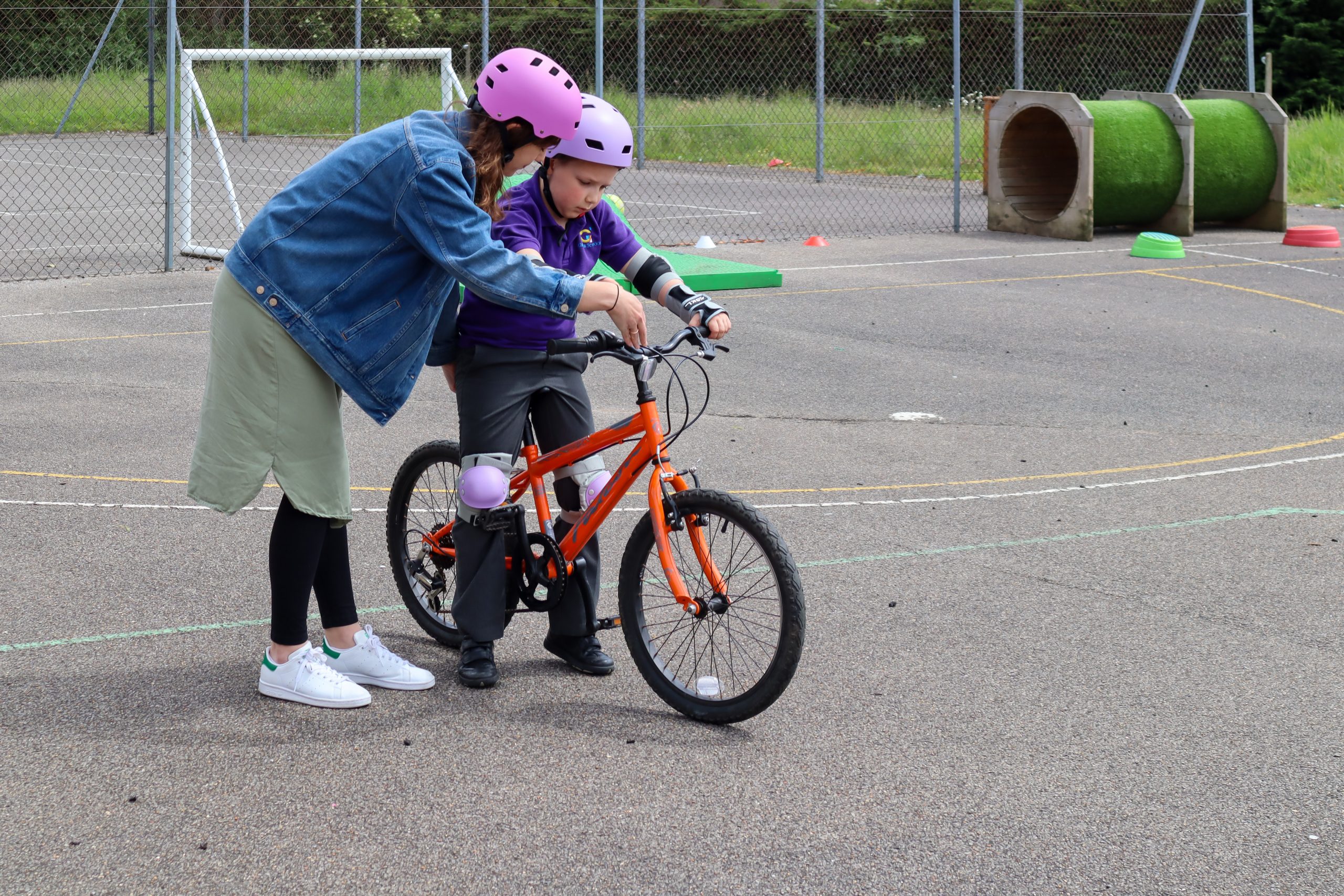Learning to ride a bike tips & tricks

Balancing:
- Supporting balance is important to teach as a separate skill from learning to pedal.
- Encourage children to scoot along using their feet to push against the ground. This way you are breaking the task of balancing down.
- Use a scooter- this allows the child to isolate the skill of balancing two feet on the scooter deck (when gliding).
- Children need to be going fast enough on the bike/scooter, so you can incorporate a game to encourage a “gliding” movement
Eg. The floor is lava game, use chalk to draw lines on the ground and instruct your child to not touch the lines (picking up their feet over the chalk lines), Follow the leader or simple obstacle courses on bikes, trikes or scooters.
- Have your child practice safely putting their feet on the ground to avoid falling. Our goal is to develop a “self-protection” reflex, where children will recognise their change in equilibrium and catch themselves when they experience a disruption in balance.
Walking with the bike:
- Support walking along in a straight line whilst holding onto the handle- bars, with the bike on their right-hand side. When they can do this, teach them to use both brakes to stop the bike suddenly on command.
- Whilst still walking beside the bike and not yet riding on it, teach your child how to turn corners (using plenty of space). This will help them begin to learn how to handle and steer the bike, and how the weight of the bike is distributed and managed.
Pedalling:
- Teach your child to kick the pedals into position ready for push off, with their preferred foot just forward of the highest position to get good leverage.
- It may also help to get the child to lay on the floor on their back and practise the pedalling action with their feet in the air so they understand the action required.
Riding:
- Whilst scooting along and building balance skills, repeat the same stages of learning as before when learning to walk beside the bike – first learn to go in straight lines and to use the brakes well, and then to turn corners.
- Hold the back of the seat to give some help with balance at first as the child gets used to pedalling whilst balancing. If you can use two adults, one each side if the child really struggles with balance.
- You will gradually feel your child managing to balance without your help.
- As they pedal and gradually release your grip to allow them to feel their body adjusting to the fading support.
Surfaces to practise on:
- For some children, practising on a smooth, flat surface (such as the concrete) is preferred because it makes pedalling a bit easier (requiring less strength or force).
- For others, pedalling on a flat grassy surface, although it may require more strength to pedal, it can provide them with more proprioceptive feedback (resistance that is recognised by joints and muscles) so their body can better understand the motion.

